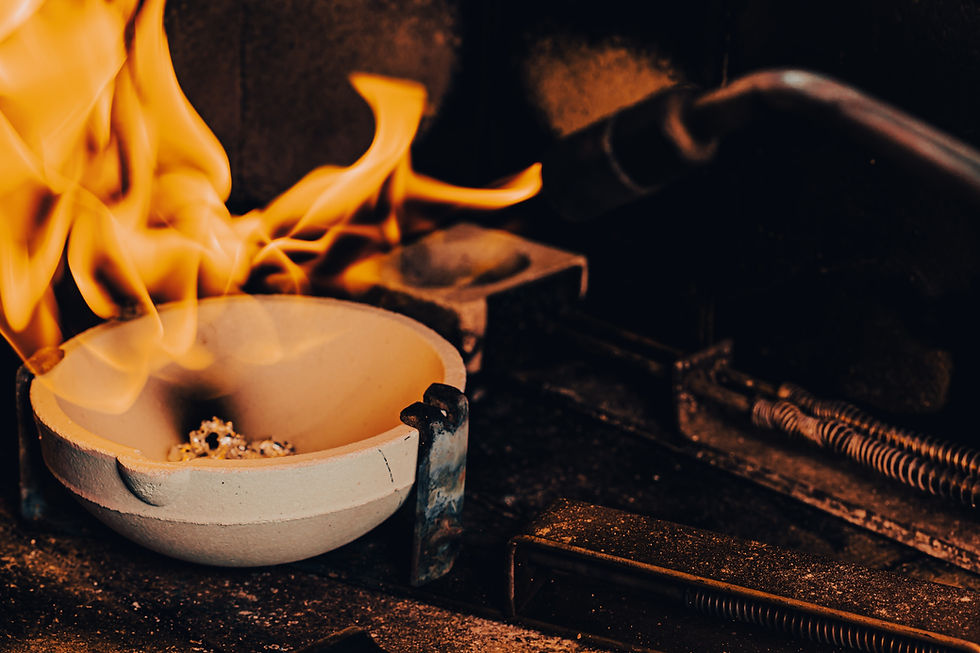Before the Vikings - Early Northern Cultures
- Sylvia Rose

- Nov 6, 2023
- 4 min read
Updated: Jan 28, 2025
In the European Bronze Age, the North is a wild place, populated by nomadic tribes, great bears and howling spirits on endless nights. The only thing more fearsome than the savage lands are those who inhabit them.

The northern Bronze Age begins c. 1700 BCE, a time when metallurgy is already in full swing in the south. Northern European Copper or Chalcolithic Age bridges the gap between Neolithic and Bronze Ages.
In the north, copper use starts as early as 5000 BCE through trade. Natural deposits are not exploited. Copper is malleable, easy to work by hand. One of the seven metals of antiquity, copper can be smelted from a parent rock and worked with stone tools.
Bronze Age northern European people include:
Sámi - northern indigenous Scandinavia
Funnelbeaker c. 4300 - 2800 BCE
Corded Ware c. 3000 - 2350 BCE
Battle Axe c. 2800 - 2300 BCE Scandinavia
Bell Beaker c. 2800 -1800 BCE
Únětice c. 2300 - 1600 BCE
Tumulus c. 1600 - 1200 BCE
Urnfield c. 1300 - 750 BCE (Iron Age)
Lusatians c.1300 - 500 BCE (Iron Age)
Some, like Bell Beaker and Tumulus, cover much of Europe, and cultures overlap at different times. The northern populations are a result of migrations provoked by the spread of Yamnaya people from the Ponti-Caspian Steppe in the 4th millennium BCE.

4000 ya, Britain and Central Europe supply Denmark with copper and tin. Without metal sources, the North Sea people import metal objects recast for local use. In the North, some societies merge, while others are more aggressive to their neighbors.
Everyone wants control of the Baltic and North Sea coasts, for trade, shipping, battle and other location advantages, and supplies of precious amber. Local hostilities break out. Coastal cultures go through periods of settlement and displacement.

Early people along the Baltic and North Sea coasts evolve into such culture groups as Balts, Prussians, Estonians, Scandinavians, Fins. Along the North Sea are today's Great Britain, Denmark, Norway, Germany, Netherlands, Belgium and France.
Trade routes such as the Amber Roads, some of the earliest known roads in Europe, lead south to the Mediterranean Sea. Egypt and Mesopotamia. Salt and obsidian are already traded at sites arising in the Neolithic.

The early amber economy helps create some of the oldest known roads in Europe. Water, inland rivers and maritime routes are important conveyers of people and goods. Trade with England, an important source of tin, is lucrative from the northern ocean coasts.
Trade goods include wool, amber, linen, weapons, tools, grain, spices, incense, houseware, luxuries such as perfume or gemstones, personal items like combs and hair clips. Settlements grow up around the routes.

Along the Amber Roads, one can get oranges from the south, a special treat; colored yarn, needles, fabric, ginger, and of course copper and tin to make the alloy bronze. With new availability of materials and information the Nordic Bronze Age is a time of progressive activity.
Agriculture is tough. Besides being snowbound for large parts of the year, the land is rocky and clay-heavy, breaking implements such as plows. Crops including einkorn wheat, millet, broad bean, beets, potatoes and gold-of-pleasure are hardy enough to cultivate

Trade helps stabilize the economy, inspire ideas and create cultures, tools, weapons, textiles and food. As advanced weaponry develops, war and battle seize fertile lands and rich resources. Conquest goes to the mighty.
From the Neolithic the primary northern building style is the longhouse. One or more fire places provide heat, light and cooking. Stone or clay oil lamps might also be used, filled with animal fat. Smoke rises and seeps out through the thatch.

Made of local timber the longhouse is 5.5 - 7 m (18 - 23 ft) wide with variance in length from 20 m (66 ft) to 45 m (148 ft). Twenty to thirty people live in each, along with animals. No windows are apparent and just one entrance.
The house has various partitions for sleeping, animals, storage, daily living. Walls are typically wattle-and-daub style, in which the wattle is a woven mat or partition and the daub a sticky mix of clay and dung. Thatched roofs are usually straw, dry stalks of plants.

Germanic cattle-farmer longhouses appear at the SW North Sea in the 3rd or 4th century BCE. They're ancestors of medieval house types such as Scandinavian langhus; English, Welsh, and Scottish longhouse variants; and the German and Dutch Low German house.
In early times people stay together in tribal groups or settlements. One never knows what awaits in the woods.

Non-Fiction Books:
Fiction Books:
READ: Lora Ley Adventures - Germanic Mythology Fiction Series
READ: Reiker For Hire - Victorian Detective Murder Mysteries



